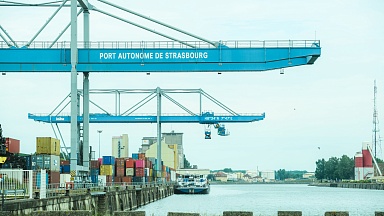Trade between Germany and China, which are the two economic leaders of their regions, is the most important segment of interregional trade in the direction of China-Europe-China. In 2020, China became the EU’s main trading partner, and the commodity turnover between Germany and China amounted to approximately USD 244 billion. German exports are essential for balancing the flow of commodities, given the excess of the country’s imports from China over exports.
In value terms, the main commodities of German exports to China are automotive equipment, mechanical equipment and electrical devices, which account for 62% of the country’s exports, that is, approximately USD 69.1 billion. This state of affairs is connected with the historical specialization of the country’s economy. In addition, a distinctive feature of German exports is a significant share of pharmaceutical products resulting from the developed chemical industry of the country.
To select the most promising commodities of potential cargo traffic from Germany to China in terms of switching to the railway, UN COMTARDE data on German exports to China in 2019 and 2020 were analysed in quantitative terms, as well as data from Eurostat on the types of transport by which German commodities were exported to China in 2020. The data were compared at the level of six HS signs. Further, for a more detailed analysis, 15 main commodity groups were identified on six HS signs, for which the largest export volumes are noted, as well as the largest increase in German exports to China in physical terms in 2020.
According to the analysis, a large-scale increase in exports is observed in the supply of wood raw materials (HS 44), i.e. spruce and fir timber (4.6 million tons), as well as spruce and fir lumber (0.41 million tons), beech timber (0.25 million tons), and beech lumber (0.11 million tons). This is due to the reorientation of this industry to export.
Despite the weak growth in the group as a whole, automotive equipment is promising for the modal shift. The growth was shown by body parts and accessories (HS 870829), thereby reaching the level of 233,000 tons, of which 3,870 tons passed along the Eurasian route (+54.8%). Passenger cars with a gasoline engine and an electric motor without external recharging (HS 870340) have great long-term prospects, the supply of which increased by 29,400 tons (+97%). Although 4,500 tons of this product passed along the Eurasian route, the decarbonisation agenda and the demand for hybrid cars make this category a potentially significant growth point in the medium term.
The potential in terms of food products also continues to be preserved. Significant volumes of exports of fresh milk (HS 040120, HS 040110) and pork (HS 020329, HS 020649) are not yet accompanied by an increase in such deliveries by rail. This fact actualizes the issue of the use of electronic seals necessary for the transportation of commodities across the territory of Russia in the context of counter-sanctions.
A significant increase in physical terms was shown by the products of the ferrous metallurgy. Despite the fact that China is also a supplier, certain commodity sub-items of German exports are in demand on the Chinese market and showed a noticeable increase in absolute figures (pig iron, slabs, etc.).
The analysis shows an increase in the share of railway cargo transportation in certain categories, as well as a significant share of the railway in the transportation of German automotive products to China. However, in general, the share of rail transport continues to remain low for most commodity items of German exports to China.
The full version of the material is available here.





